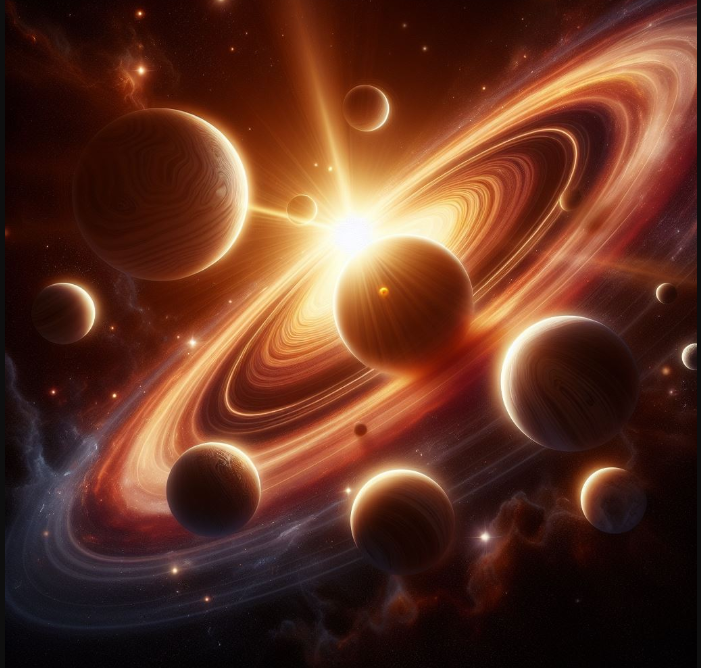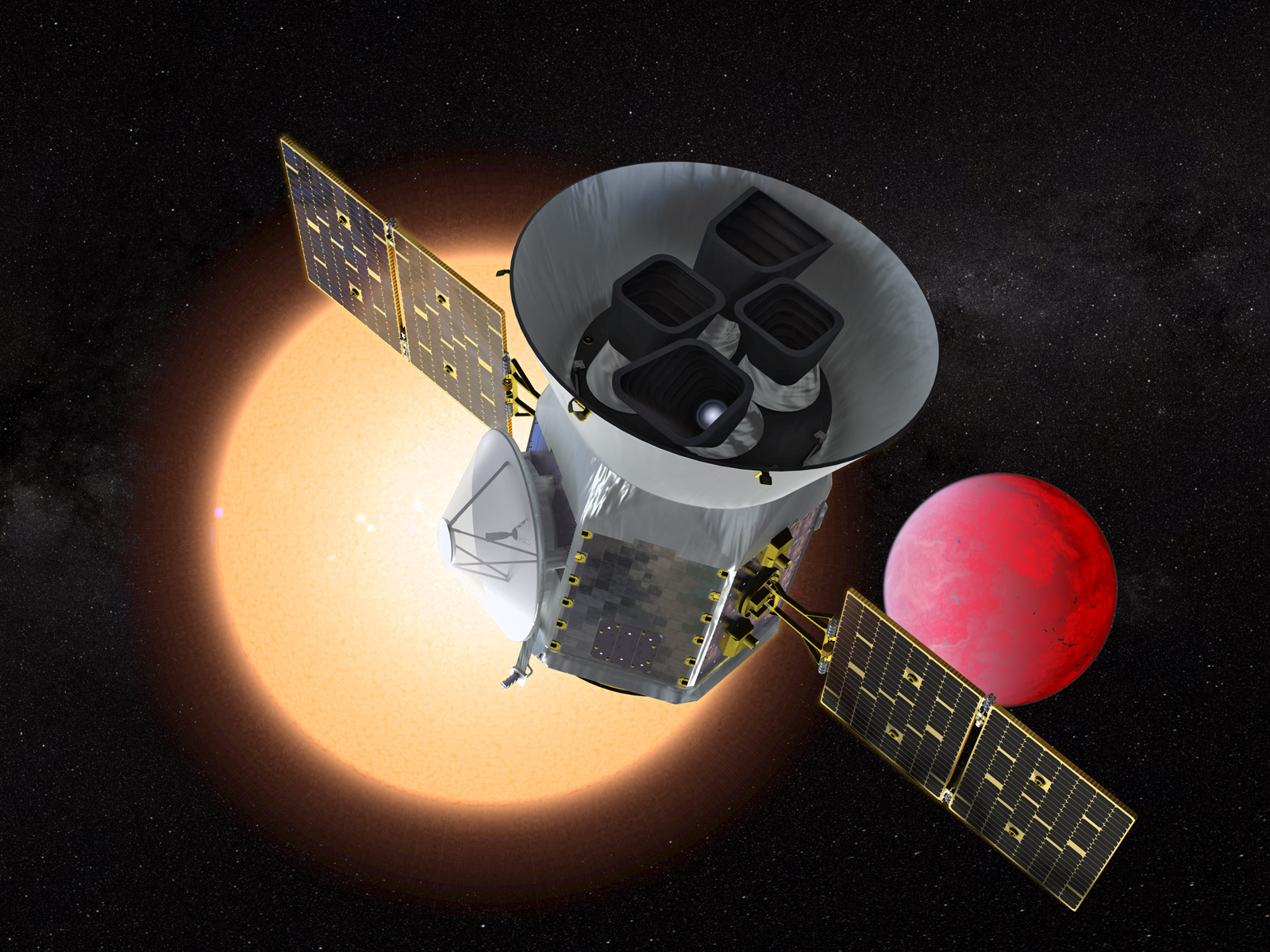Protoplanetary disks play a crucial role in the formation of planets around young stars
u/tonynetone1 - This is an AI concept portrays inner protoplanetary disk. New measurements by NASA’s James Webb Space Telescope have detected water vapor
This is an AI concept portrays inner protoplanetary disk. New measurements by NASA’s James Webb Space Telescope have detected water vapor
New measurements by NASA’s James Webb Space Telescope’s MIRI (Mid-Infrared Instrument) have detected water vapor in the system’s inner disk
Webb is solving mysteries in our solar system, looking beyond to distant AND mysterious structures THIS technology is an international program led by NASA with its partners
Protoplanetary disks play a crucial role in the formation of planets around young stars. These disks are composed of gas and dust particles, and they orbit a central young star. Over time, the material in the disk starts to clump together due to gravitational forces, eventually forming planets and other celestial bodies.
The recent detection of water vapor in the protoplanetary disk of the PDS 70 system is indeed significant for several reasons. The PDS 70 system is located approximately 370 light-years away from Earth, and it has been a focus of study for astronomers using advanced observational techniques.
The presence of water vapor in the terrestrial zone of the protoplanetary disk is noteworthy because this region is considered the prime location for the formation of rocky planets. The terrestrial zone, also known as the habitable zone or Goldilocks zone, is characterized by conditions suitable for the formation of planets with solid surfaces, where water can exist in liquid form. The detection of water vapor in this zone suggests the possibility of water being available during the formation of rocky planets in the PDS 70 system.
Understanding the composition of protoplanetary disks and the presence of key molecules like water vapor provides valuable insights into the conditions that lead to the formation of planetary systems. It contributes to our broader understanding of the processes involved in planetary formation and the potential for habitable environments in other star systems. This kind of research helps astronomers piece together the puzzle of how planetary systems, including our own solar system, come into existence. Water vapor can indeed be present in the atmospheres of exoplanets (planets outside of our solar system).
Detecting water vapor in exoplanet atmospheres is a significant area of research in the field of exoplanet studies. Scientists use various methods to detect the presence of water vapor on distant exoplanets. One commonly used technique is spectroscopy, which involves analyzing the light from the star that passes through the exoplanet's atmosphere. This analysis allows researchers to identify the presence of specific molecules, including water vapor, by looking for characteristic absorption patterns in the spectrum. The discovery of water vapor in an exoplanet's atmosphere can provide valuable insights into the planet's potential habitability. Water is a crucial ingredient for life as we know it, so the presence of water vapor on exoplanets is often considered an essential factor in determining their potential habitability.
However, it is important to note that the detection of water vapor does not directly imply the presence of liquid water or the habitability of an exoplanet. Many other factors, such as the planet's distance from its star, its composition, and the overall environmental conditions, need to be considered to assess whether an exoplanet may have the right conditions to support life. Ongoing research and technological advancements in space telescopes and spectroscopic techniques are continually improving our understanding of exoplanet atmospheres, including the presence of water vapor. With time, we expect to gather more data and learn more about the atmospheres of exoplanets and their potential for hosting water vapor and, possibly, life.
Protoplanetary disks play a crucial role in the formation of planets around young stars
u/tonynetone1 - This is an AI concept portrays inner protoplanetary disk. New measurements by NASA’s James Webb Space Telescope have detected water vapor
This is an AI concept portrays inner protoplanetary disk. New measurements by NASA’s James Webb Space Telescope have detected water vapor
New measurements by NASA’s James Webb Space Telescope’s MIRI (Mid-Infrared Instrument) have detected water vapor in the system’s inner disk
Webb is solving mysteries in our solar system, looking beyond to distant AND mysterious structures THIS technology is an international program led by NASA with its partners
Protoplanetary disks play a crucial role in the formation of planets around young stars. These disks are composed of gas and dust particles, and they orbit a central young star. Over time, the material in the disk starts to clump together due to gravitational forces, eventually forming planets and other celestial bodies.
The recent detection of water vapor in the protoplanetary disk of the PDS 70 system is indeed significant for several reasons. The PDS 70 system is located approximately 370 light-years away from Earth, and it has been a focus of study for astronomers using advanced observational techniques.
The presence of water vapor in the terrestrial zone of the protoplanetary disk is noteworthy because this region is considered the prime location for the formation of rocky planets. The terrestrial zone, also known as the habitable zone or Goldilocks zone, is characterized by conditions suitable for the formation of planets with solid surfaces, where water can exist in liquid form. The detection of water vapor in this zone suggests the possibility of water being available during the formation of rocky planets in the PDS 70 system.
Understanding the composition of protoplanetary disks and the presence of key molecules like water vapor provides valuable insights into the conditions that lead to the formation of planetary systems. It contributes to our broader understanding of the processes involved in planetary formation and the potential for habitable environments in other star systems. This kind of research helps astronomers piece together the puzzle of how planetary systems, including our own solar system, come into existence. Water vapor can indeed be present in the atmospheres of exoplanets (planets outside of our solar system).
Detecting water vapor in exoplanet atmospheres is a significant area of research in the field of exoplanet studies. Scientists use various methods to detect the presence of water vapor on distant exoplanets. One commonly used technique is spectroscopy, which involves analyzing the light from the star that passes through the exoplanet's atmosphere. This analysis allows researchers to identify the presence of specific molecules, including water vapor, by looking for characteristic absorption patterns in the spectrum. The discovery of water vapor in an exoplanet's atmosphere can provide valuable insights into the planet's potential habitability. Water is a crucial ingredient for life as we know it, so the presence of water vapor on exoplanets is often considered an essential factor in determining their potential habitability.
However, it is important to note that the detection of water vapor does not directly imply the presence of liquid water or the habitability of an exoplanet. Many other factors, such as the planet's distance from its star, its composition, and the overall environmental conditions, need to be considered to assess whether an exoplanet may have the right conditions to support life. Ongoing research and technological advancements in space telescopes and spectroscopic techniques are continually improving our understanding of exoplanet atmospheres, including the presence of water vapor. With time, we expect to gather more data and learn more about the atmospheres of exoplanets and their potential for hosting water vapor and, possibly, life.
















